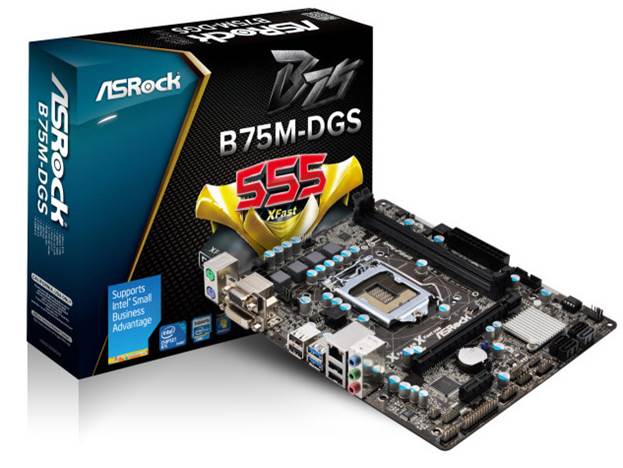SSF Motherboards
Once you’ve decided on a case then you are
going to need to source a motherboard. Depending on your preferences, this will
either support Intel or AMD CPUs – and may or may not come with one already
attached.
Our personal choice would be to go for AMD
chips, because its APU technology provides better on –board graphics than
Intel’s equivalent. There is some very fine hardware from that camp too,
however- and often it’s a very close call. The only equipment we’d generally
recommend you avoid is the Intel Atom CPU, which just isn’t’ powerful enough in
most cases for the media experience most people would prefer. With all this in
mind, there are some good motherboards for media PC consideration:
ZOTAC
A75-ITX WiFi B-series ($135.88)

This is a Mini-ITX socket FM2 motherboard
that takes the new AMD A Series processors, the cheapest of which is about
$60.4. The GPU is part of that chip, so the better APU you buy the quicker the
graphics are also. This is a feature rich design that includes no less than
eight (count ‘em) USB 3.0 ports, dual Gigabit Ethernet and onboard Wi-Fi.
However, the critical expansion feature
here is the single PCIe x 16 slot, which means you can use a discrete video
card if your case is big enough to accept that. If you’re looking to do nay
gaming, we’d recommend you make sure it is.
Gigabyte
GA-E350N ($72.46 Overclockers UK)

In terms of Mini ITX value for money, it
just doesn’t get better than the Gigabyte GA-E350N. Amazingly this motherboard
comes with a AMD E-350 dual core CPU attached, allowing you to build a very
cheap computer once you’ve added a case, RAM and storage. The feature set is
very good, and includes a PCIe x 16 slot (x4 electrically, Gigabit LAN, triple
video outputs (VGA, DVI and HDMI), four SATA ports and eight-channel audio with
S/PDIF Out. The caveats are that you can’t swap the APU out, and it doesn’t
have a USB 3.0 port. The Gigabyte GA-E350N is fine for pure media use, though.
ASRock
B75M-DGS ($65.80 Ebuyer)

Those wanting to build a small, but
powerful Intel mATX system should look at the ASRock B75M-DGS. It will accept
Intel Core i7, i5 or i3 processors in the LGA1155 package, and standard DDR3
RAM modules. Depending what direction you take this design in, you could make a
very quiet media-exclusive system, or a small gaming platform, using the PCIe
x16 slot to add discrete graphics. The ASRock B75M –DGS is made for those who
want a SFF Media system that’s less of a compromise.
Final thoughts
I’ve talked about many of the possible
options, and plenty of things you need to consider when taking the SSF path.
However, I’ve probably fluffed answering the one critical question, is it
better to go with a bought solution or build one?
A bought solution will generally deliver
what you want at a marginally better price, in a more compact enclosure, and
some element of warranty for the whole device. Whereas a home built system will
give you more flexibility in terms of what hardware you deploy, and therefore
the uses that the system can be put to could be significantly more
wide-ranging.

A
good SSF Media system can be a joy, and a bad one very irritating, so it is
important to choose well by considering your needs now and in the future.
I come down to this: what price is the
ability to extend the solution worth to you and will you realistically
repurpose the computer in a couple of years’ time?
If you are very likely to reuse the system
elsewhere, either as a desktop replacement or as a server, then a custom build
is worth the extra is might cost. Otherwise, the pre-built solutions have their
place, and some can be much cheaper than almost anything that you could
contract form parts. As with any serious investment, it’s worth considering the
boundaries or what you intend this equipment to do now and in the future,
before jumping into a purchase you might later regret.
I’d also recommend doing some proper
research if you are going for a purchased solution, because it’s easy to look
at a design and make assumptions about it that aren’t correct. Finding forum
users who have that item or objective reviews like the ones we, hopefully,
provide in these pages, can give you an insight into where any weaknesses may
lie, or where caveats apply.
Many media solutions are made to achieve
the trick of smoothly playing 1080p video and very little beyond that. For
browsing the Internet or using social networking apps that’s fine, but most of
these systems won’t be capable of playing a complex 3D game at high resolution
and good detail settings. If you want one that can do justice to Bioshock
Infinity, or whatever, then you’ll need to build a custom rig.
A good SSF Media system can be a joy, and a
bad one very irritating, so it is important to choose well by considering your
needs now and in the future.